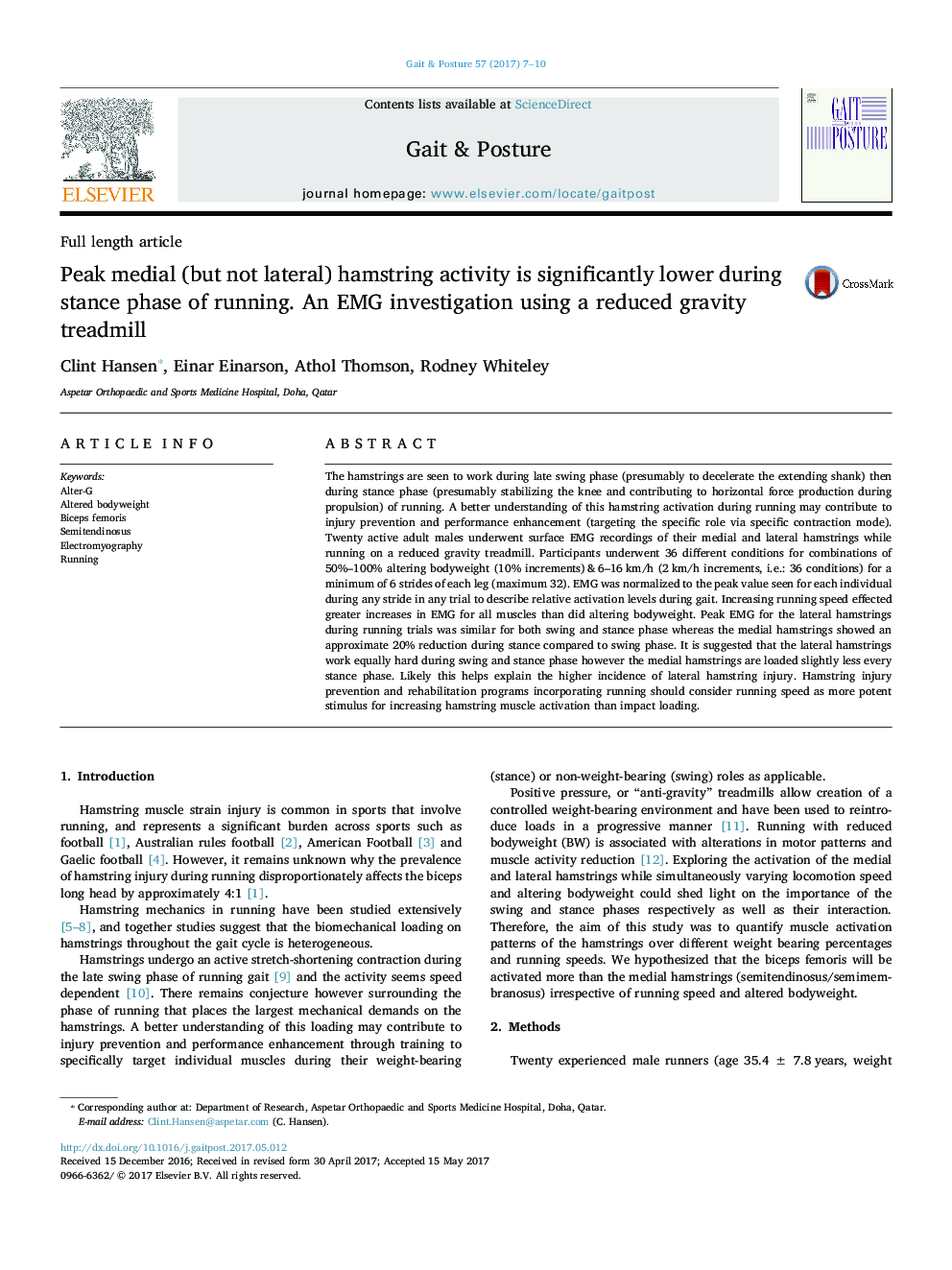| کد مقاله | کد نشریه | سال انتشار | مقاله انگلیسی | نسخه تمام متن |
|---|---|---|---|---|
| 5707795 | 1603838 | 2017 | 4 صفحه PDF | دانلود رایگان |
عنوان انگلیسی مقاله ISI
Peak medial (but not lateral) hamstring activity is significantly lower during stance phase of running. An EMG investigation using a reduced gravity treadmill
دانلود مقاله + سفارش ترجمه
دانلود مقاله ISI انگلیسی
رایگان برای ایرانیان
کلمات کلیدی
موضوعات مرتبط
علوم پزشکی و سلامت
پزشکی و دندانپزشکی
ارتوپدی، پزشکی ورزشی و توانبخشی
پیش نمایش صفحه اول مقاله

چکیده انگلیسی
The hamstrings are seen to work during late swing phase (presumably to decelerate the extending shank) then during stance phase (presumably stabilizing the knee and contributing to horizontal force production during propulsion) of running. A better understanding of this hamstring activation during running may contribute to injury prevention and performance enhancement (targeting the specific role via specific contraction mode). Twenty active adult males underwent surface EMG recordings of their medial and lateral hamstrings while running on a reduced gravity treadmill. Participants underwent 36 different conditions for combinations of 50%-100% altering bodyweight (10% increments) & 6-16Â km/h (2Â km/h increments, i.e.: 36 conditions) for a minimum of 6 strides of each leg (maximum 32). EMG was normalized to the peak value seen for each individual during any stride in any trial to describe relative activation levels during gait. Increasing running speed effected greater increases in EMG for all muscles than did altering bodyweight. Peak EMG for the lateral hamstrings during running trials was similar for both swing and stance phase whereas the medial hamstrings showed an approximate 20% reduction during stance compared to swing phase. It is suggested that the lateral hamstrings work equally hard during swing and stance phase however the medial hamstrings are loaded slightly less every stance phase. Likely this helps explain the higher incidence of lateral hamstring injury. Hamstring injury prevention and rehabilitation programs incorporating running should consider running speed as more potent stimulus for increasing hamstring muscle activation than impact loading.
ناشر
Database: Elsevier - ScienceDirect (ساینس دایرکت)
Journal: Gait & Posture - Volume 57, September 2017, Pages 7-10
Journal: Gait & Posture - Volume 57, September 2017, Pages 7-10
نویسندگان
Clint Hansen, Einar Einarson, Athol Thomson, Rodney Whiteley,